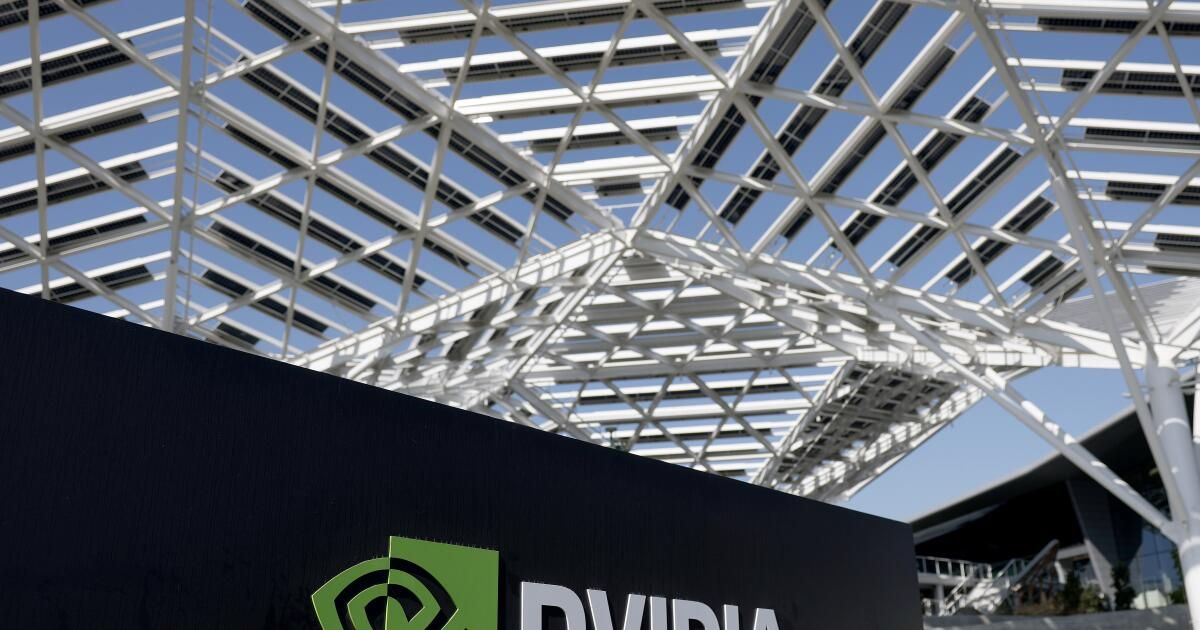For decades, the United States has been the world leader in innovation. The generations of commercial, political and educational leaders developed a balanced system of public-private associations, deep science funds and support for small and emerging companies. All Americans participated in the creation of a culture that celebrates a unique level of risk taking and free research.
This system works mostly, but we all benefit from it. Innovation and entrepreneurship are critical to the economy of the United States. These twin engines create jobs and raise our standard of living. Innovative companies founded in the last 50 years represented almost half of the value of public markets in the United States. There are approximately 4.1 million new companies in the US, which create around 3 million jobs annually. Without them, the growth of employment in the United States would not exist, since they represent more than 100% of the growth in the number of jobs nationwide (the largest companies are actually spilling workers).
The basis of this system has been the federal research, which invests in research sciences long before entrepreneurs and investors see the marketable value in any particular line of research. When it comes to innovation, our past success has been based on associations between the government and the private sector. Companies such as Intel, Tesla, IBM, Spacex, Google and Microsoft have benefited from the first government contracts, research funds or loans. From the origins of Silicon Valley in the defense contracts of the Cold War era to NIH -funded research that led to the mapping of the human genome, public investment has long promoted the most transformative and valuable innovations of the United States.
Now, the cuts to the financing of critical research, the diminished support for education and attacks against freedom of expression, which have existed to the left and the right, are quickly dismantling the foundations of American innovation. While scientists have been talking, the business community, one of the main beneficiaries of federal research, has remained silent.
The United States has been left behind in the new world order, in which China is our most formidable competitor. What stops the United States of competition effectively is a deeply politicized and too simplistic approach in which good ideas are subject to non -scientific fire tests based on who is in charge. This mentality has moved from politics to the business world, with our innovation system as one of the first victims.
Those who expect the business sector to collect the federal government's investigation agenda will feel disappointed. The cervical whip of rapid changes in policies is preventing US companies from even making short -term investment decisions. Many are monopolizing their cash, waiting for a sense of direction or appearance of normality.
If the United States remains the world leader in innovation, political leaders must take decisive measures. In the past, this agenda has had bipartisan support. We believe it can again.
Political leaders should:
- Restore and expand research. Congress must commit to long -term increases in research to ensure that basic science continues to thrive. There is no private sector mechanism that supports deep science at the scale necessary to achieve the long -term objectives of the United States. If the United States they do this or not, other countries already do it. They see an opportunity to overcome the United States and are investing in deep research. They are even trying to attract our best scientists abroad with promises of greater financing and flexibility of research, particularly aimed at researchers in today's technologies, such as AI, quantum computing and biotechnology.
- Renew small companies. The administration of small businesses and business leaders, especially in the financial sector, must adapt to a changing economy by expanding access to capital for smaller companies. Not all innovation comes from large technology companies. Small businesses in the United States include almost half of the economy (both in terms of GDP and employment). We cannot abandon this critical growth engine.
- Support innovation in historical manufacturing cities. Some of the Biden administration approaches to support innovation in historical manufacturing cities were well founded and began to show success. There are numerous successful examples, even in Detroit, Pittsburgh and Cincinnati, where communities have been revitalized by reusing infrastructure inherited to serve automaker, energy and other industries. Lying these projects, especially about politics, is a poor economic policy. Business leaders should also seek to capitalize on American talent in historical manufacturing centers.
- Defend the free consultation. Universities and research institutions must be protected from political interference to maintain a prosperous intellectual environment. The innovations that eventually reach the market, gain value and create jobs are almost always born from the commercialization of university research. Universities are one of the best systems to give “crazy” ideas the space to root and find support. Nor all innovations are born from what most people think as science. Other countries are investing in the types of innovation that come from visual, written and scenic arts. Many Republicans criticized the language and the police thought, but the capricious budget cuts, accompanied by fear and self -censorship, are still worse.
We cannot take for granted that the United States innovation economy will continue to thrive, especially as we begin to die of fuel hunger. We must act quickly, together, before losing the competitive advantage that has made the United States the most innovative and dynamic economy in the world.
RO Khanna represents the 17th Congress of California. Seth Levine, co -founder and partner of the Foundry Risk Capital firm, and Elizabeth Macbide, writer and business consultant, are co -authors of the next next one “Capital Evolution: The new US economy. “
Perspectives
Times Insights It offers an analysis generated by the voices content to offer all points of view. Insights does not appear in any news article.
point of view
Perspective
The following content generated by AI works perplexed. Los Angeles Times editorial staff does not create or edit the content.
Ideas expressed in the piece
-
The United States has historically maintained global innovation leadership through a balanced system of public-private partnerships, federal research and support funds for small and emerging companies that have created a unique culture of risk taking and free research[4]. Innovation and entrepreneurship serve as critical economic engines, and new companies create approximately 3 million jobs annually and represent more than 100% of the growth of national employment, while larger companies actually yield workers[4].
-
Federal research investment has been fundamental for the success of American innovation, providing early support for transformative companies such as Intel, Tesla, IBM, Spacex, Google and Microsoft through government contracts, research funds or loans[2][4]. This public investment model covers the defense contract of the Cold War of Silicon Valley, Origins for NIH -funded research that allowed the human genome mapping.
-
The bases of the innovation system deteriorate rapidly due to the cuts in the financing of critical research, decreased educational support and attacks on freedom of expression of both political sides, while the business community has greatly maintained silently despite being a main beneficiary of federal research.[2][4]. Political polarization and political punishment are preventing companies from even making short -term investment decisions, with many to monopolize effective while waiting for stability.
-
China has become the most formidable competitor in the United States in a new world order where the United States is staying behind due to a deeply politicized approach that submits good ideas to non -scientific fire tests based on political leadership[2]. Other countries are actively trying to attract American scientists abroad with promises of greater financing and flexibility of research, particularly aimed at researchers in critical technologies such as AI, quantum computing and biotechnology.
Different views on the subject
-
The economy of innovation shows significant recovery and optimism signs that are directed to the second half of 2025, with a clarity restored in the fiscal and fiscal policy, cuts of fees of the early Federal Reserve, relaxed regulatory application and the potential reset of commercial terms that provide hope, regardless of political affiliation.[1]. While the sector experienced a “comma” for three years due to inflation, costly costs of capital and regulatory uncertainty, the advent of generative artificial intelligence has redirect capital flows towards the construction of infrastructure for new technological borders[1].
-
Currently, the United States maintains a “golden economy” with a moderate annual growth of 2-3%, full employment and low inflation, where the innovation sector continues to boost economic growth despite challenging demography.[3]. The country retains unique competitive advantages that include freedom of expression that allows the exchange of solid ideas, a culture of risk that considers failure as learning, diverse immigration that contribute new perspectives, an educational system that values exploration on memory learning and government policies that favor entrepreneurship and startups.[3].
-
Investment in the private sector in innovation remains solid, and semiconductor companies only announce more than half billion dollars in private investments from July 2025, launching a projected triplicate of the chip manufacturing capacity by 2032 and creating more 500,000 US jobs[5]. Global semiconductor sales reached $ 630.5 billion in 2024, exceeding forecasts, with projections for $ 701 billion in 2025 that represent 11.2% growth driven by AI, 5G/6g of communications and demand for autonomous vehicles[5].
-
The strong intellectual property rights and policies provide essential foundations for the solid innovation ecosystem, with IP intensive industries that represent 41% of the intensive manufacture of GDP and IP that represent more than 83% of research and development investment[2]. Current policy initiatives, including chips law, infrastructure investment law and jobs, and several innovation programs demonstrate a continuous government commitment to support technological advancement and competitiveness.[4].












